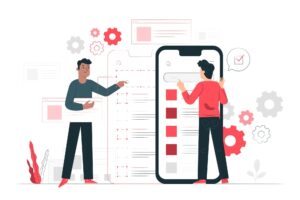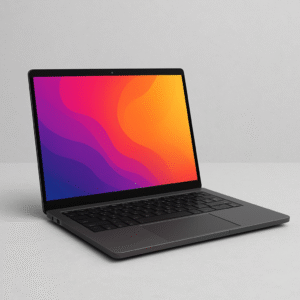Introduction
With the era of Industry 4.0, the adoption of cutting-edge technologies is radically changing the manufacturing industry. Among the most influential innovations in recent times is Artificial Intelligence (AI). From optimizing production processes to improving product quality, AI manufacturing solutions are transforming the way factories work, opening the door to smart, agile, and efficient production systems. This change is not only making manufacturing more profitable but also redefining the workforce and operational strategies in manufacturing facilities across the globe.
In this article, we will examine how AI is revolutionizing traditional manufacturing, its fundamental advantages it provides, industry use cases, challenges in implementing it, and what the future of AI-driven manufacturing looks like.
Understanding AI in Manufacturing
AI for manufacturing means the application of smart algorithms and machine learning models to automate and optimize processes. Such solutions are able to process large amounts of data from machines, sensors, and systems to detect patterns, make failure predictions, enhance quality, and enable autonomous decision-making.
Typical AI manufacturing solutions are:
Predictive maintenance
Automating quality control
Supply chain optimization
Production scheduling and planning
Demand forecasting
Smart robotics
Computer vision-based defect detection
These technologies allow manufacturers to move from reactive to proactive decision-making, considerably improving productivity and reducing downtime.
The Emerging Demand for AI in Manufacturing
Manufacturing is feeling pressure to get more competitive, robust, and responsive to customer needs. A few factors drive the increasing demand for AI manufacturing solutions:
Global competition: Firms need to improve efficiency to remain competitive.
Lack of skilled labor: Automation makes up for the lack of skilled workers.
Demand for customization: AI assists in supporting on–demand and small–batch manufacturing.
Data explosion: Factories today produce huge volumes of data, and AI can convert it into decision-making insights.
Sustainability goals: AI can reduce waste and optimize energy consumption.
By helping solve these challenges, AI isn’t merely a nicety, but a requirement for manufacturers to become future-proof.
Key Benefits of AI Manufacturing Solutions
1. Predictive Maintenance
One of the most powerful applications of AI in manufacturing is predictive maintenance. Conventional maintenance schedules are either time-oriented or reactive—both wasteful. AI-powered systems have the ability to track equipment in real time and forecast when a component will fail. This minimizes unplanned downtime, increases asset lifespan, and saves expenses.
2. Improved Product Quality
Defects can be detected during or after production by AI systems with computer vision, pattern recognition, or machine learning algorithms. These machines perform better than human inspectors because they can detect faint defects at microscopic levels. There are reduced returns and improved customer satisfaction with regular quality checks.
3. Better Supply Chain and Inventory Management
AI algorithms can examine past data and live variables to minimize inventory levels, prevent waste, and predict supply chain disruptions. Manufacturers can react to changes in demand promptly and inexpensively.
4. Energy Efficiency and Sustainability
Through optimized machine use, minimizing idle time, and maximizing operations, AI leads to energy savings and environmentally friendly production. AI can even suggest process enhancements to minimize emissions and material waste.
5. Faster Decision-Making
AI-powered dashboards and analytics support decisions at breakneck speeds by managers. Be it reassigning resources, addressing equipment anomalies, or altering production timetables, AI enables nimble operations.
Applications of AI in Manufacturing in the Real World
1. General Electric (GE) – Predictive Analytics
GE applies AI analytics in its industrial Internet of Things (IIoT) platform to track the health of machinery and anticipate failures ahead of time. This has generated millions of dollars in savings through lower downtime and maintenance expenses.
2. BMW – Computer Vision Quality Inspection
BMW uses AI computer vision systems to check cars at and after assembly. The systems ensure that all cars conform to stringent quality levels, lessening errors and customer complaints drastically.
3. Siemens – Smart Factory Automation
Siemens applies AI on its production lines for smart process control. The system varies production flows according to real-time data, enhancing throughput and lessening rework.
4. Foxconn – Robotic Process Automation
Foxconn deploys AI-equipped robots on the assembly line capable of adjusting to new tasks and parts. They can be easily retrained, making mass production more flexible.
Key Technologies Propelling AI Manufacturing Solutions
In order to get a sense of how AI is transforming the sector, it is important to dive into the foundation technologies:
1. Machine Learning
Machine learning allows systems to automatically improve from experience without being programmed explicitly. ML is applied in manufacturing for predictive maintenance, forecasting demand, and detecting defects.
2. Computer Vision
Computer vision systems are widely applied to quality control for analyzing images and videos to detect defects, tally products, and evaluate product characteristics.
3. Digital Twins
Digital twins are software representations of real machines or processes. AI-powered digital twins replicate conditions in real-time, enabling manufacturers to pilot situations, anticipate consequences, and make improvements without causing a hitch in actual production.
4. Natural Language Processing (NLP)
NLP-based AI chatbots are now increasingly employed for communication within the enterprise, issue-fixing, and even training operators, establishing an interconnected workforce.
5. Robotics and AI Integration
Smart robots are able to adjust their motion, correct themselves, and even work in conjunction with human operators (cobots) because of AI functionalities.
Challenges in Applying AI Manufacturing Solutions
Although there are many benefits, incorporating AI within manufacturing facilities isn’t without some difficulties:
1. High Initial Investment
Installation of AI solutions typically involves large initial investment in hardware, software, and education. Small– and medium-sized manufacturers might have trouble overcoming this obstacle.
2. Data Quality and Availability
AI systems are only as good as the data they work on. Inconsistent or low-quality data from legacy systems can degrade AI performance.
3. Integration with Legacy Systems
Industrial settings still have a lot of old machinery and software. Integrating AI solutions with them can be difficult and expensive.
4. Workforce Adaptability
Employees can resist the adoption of AI because they fear losing their jobs or lack technical competence. Training and change management are essential for effective implementation.
5. Cybersecurity Risks
AI systems that are connected to industrial networks are vulnerable to cyberattacks. Having robust cybersecurity measures in place is vital.
How to Successfully Adopt AI in Manufacturing
To reap the full benefits of AI manufacturing solutions, manufacturers need to adopt a structured path:
1. Begin with a Pilot Project
Select a concrete, quantifiable use case—predictive maintenance or visual inspection—apply AI in a limited environment to test viability and ROI.
2. Prioritize Data Infrastructure
Put money into gathering, storing, and preprocessing the data. Governance of the data is essential for consistency and precision.
3. Work with Experts
Working alongside AI consultants or technology providers assists manufacturers in beating implementation challenges as well as making the correct choice of tools.
4. Upskill the Workforce
Train employees to be able to work with AI systems and read analytics to ensure long-term success. Focus on human-machine collaboration.
5. Scale Strategically
When initial projects bear fruit, scale up AI implementation in small steps across production lines or factory locations.
Future Trends in AI Manufacturing Solutions
The manufacturing future will rely more on AI. Some of the trends characterizing the next–generation AI manufacturing solutions include:
1. Hyperautomation
AI will complement other technologies such as RPA (Robotic Process Automation) and IoT to develop end-to-end automated workflows in the value chain.
2. Edge AI
Edge computing will allow AI systems to locally process data at the source (e.g., on machines), minimizing latency and maximizing speed in decision-making.
3. Generative AI in Design
AI tools will optimize not only production but also product design through generative design models, speeding up innovation cycles.
4. Human-Centered AI
The focus will move towards AI that complements human strengths instead of replacing them—via cobots, intuitive interfaces, and real-time feedback systems.
5. AI-as-a-Service (AIaaS)
Cloud-based AI platforms will provide access to AI for small manufacturers via subscription models, removing the requirement for large capital expenditures.
Conclusion
The ascendance of AI manufacturing solutions ushers in a new era in industrial progress—one in which intelligence, flexibility, and efficiency take center stage. From enhancing product quality and cutting downtime to facilitating autonomous decision-making, AI is transforming every facet of production.
Though there are difficulties, the advantages far exceed the obstacles. Companies that adopt AI now are not simply fine-tuning their processes—they are future-proofing their businesses from disruption and setting themselves up for the next innovation wave.
As technology evolves, AI in manufacturing will not be a competitive advantage—it will be the norm. The question is not whether manufacturers should embrace AI, but when they can do so to remain relevant in an increasingly smart world.




